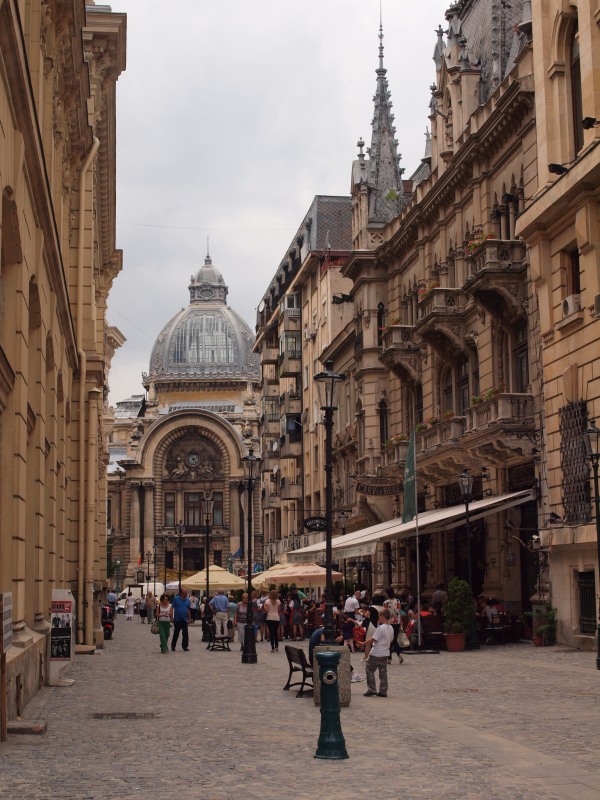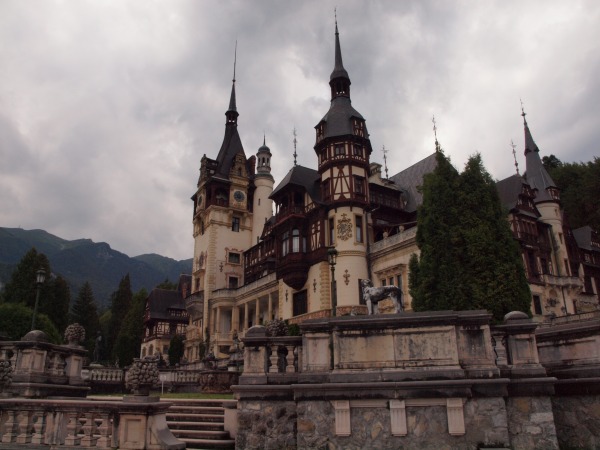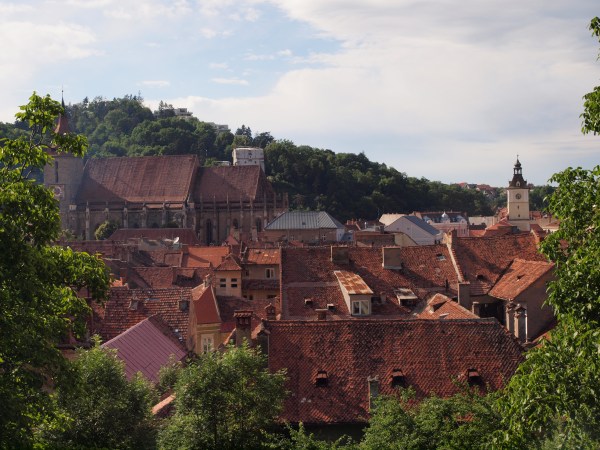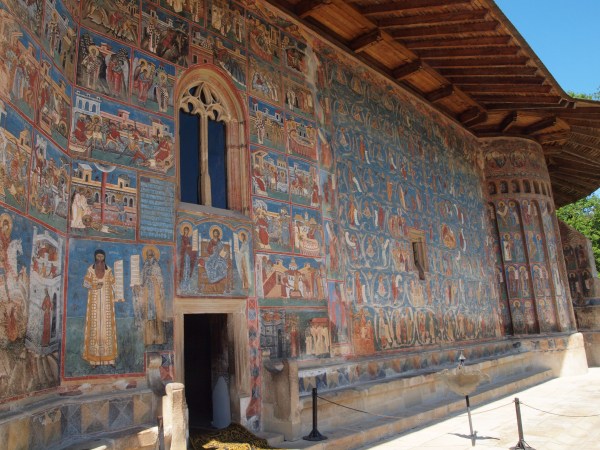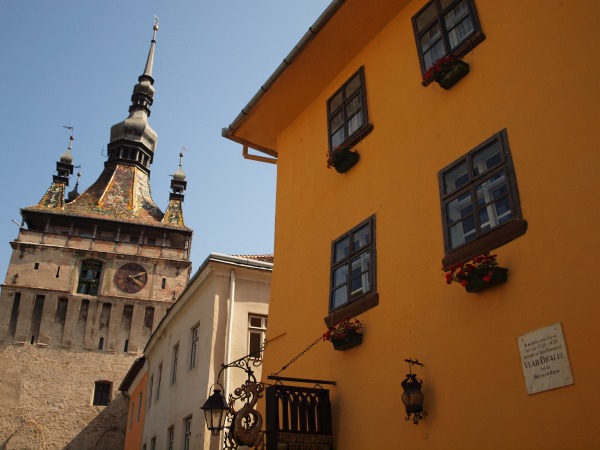If Europe is all about its capital cities, where does that leave Romania? Bucharest, victim of the infamous former president Ceausescu, is largely a mixture of unglamourous concrete buildings and few truly worthwhile sites. This is hardly a surprise when you consider that a sixth of the city was bulldozed by Ceausescu to make way for his vanity project, the presidential palace. Ironically, this building is what now draws the majority of visitors to the city, afterall it is the second largest building in the world after the Pentagon and an impressive slab of marble in its own right.
However, to highlight the palace as the only site of Bucharest is to undersell the city. It is a cheap city and easy to get around. A couple of beers in the opulent Cera Cu Cere beer house is a must. The waitresses in peasant uniform may be slightly kitsch, but the stained glass and live violinists are anything but. The city also has its green lungs. Herastrau park in particular offers a worthwhile excursion from the sticky summer heat of downtown Bucharest.
But Romania is so much more than its capital. In fact, the more rural you are, the more authentic and enjoyable the experience will be. Horses and carts rule many of the roads in this country, and it is precisely this sense of a timeless, agricultural landscape that makes Romania an incredible destination.
The Alps, the Andes, the Himalayas – all grand and famous mountain ranges. Well, how about the Carpathians anyone? Thought not. To neglect the Carpathians though, is to ignore one of the planet’s unspoilt, beautiful wilderness areas. Forming a backbone through Romania and the province of Transylvania in particular, these pine clad mountains offer unique hiking and glorious vistas. Bears and wolves still roam these ancient untrammelled lands and best of all, you can be right in the midst of them after a three hour train journey from Bucharest.
Sinaia, offers a year round getaway to escape the hustle and bustle of the city. In the winter, you can ski, in the summer you can trek. The town has a kind of upmarket, Bavarian feel, probably enhanced by its Disneyesque ‘Peles Castle’. Although referred to as a castle, it is anything but. Peles is truly a fantasy palace, straight from the pages of a fairytale book. There is no cold stonework to be found here. Pointed spires and wooden beams make up the outer walls, adorned with grand clock faces and golden murals. Statues of piccolo playing pixies sit in the garden. And the inside is even more impressive than the out. A marble statue of the archangel Gabriel watches over you as you climb the stairs. Moorish rugs, handmade samurai swords sourced from Japan and elaborate mirrors deck the various rooms and halls of the vast property – King Carol I, the castle’s patron certainly had ostentatious and exquisite taste. This was even the first castle in the world to be fully powered by locally sourced electricity!
Days can be spent in Sinaia getting the cable car up into the mountains and forging routes on the trekking paths. However, when ready, another hour or two on the train will get you to Brasov. Romania’s ground zero tourist destination.
Brasov’s central town square is a great place to hang out. The Basillica Negra (black church) looms in the background, a medieval town hall mushrooms out of the centre and there is a hubbub of activity during the summer months. You can even get an aerial view of the square by taking the cable car up Mount Tampa. The walk down is via a lovely forested route. Brasov’s real asset though is its fantastic location. Easy, cheap, local buses make regular journeys to Rasnov, the site of a precariously purched and authentic medieval fortress, Bran, famous for its atmospheric castle dubbed ‘The Dracula Castle’ and Zarnesti, a small town perched on the edge of the glorious Piatra Craului National Park.
For nature lovers in particular, Zarnesti offers a less touristed but equally as beautiful alternative to Sinaia. We stayed in a local pension run by a family of priests and were cooked up delicious hearty food. Days can be spent wandering off between the two visible mountains from the town, through the gorge and up the numerous trails beyond. Other than a few sunbathing locals having a barbecue, you will barely see another soul.
When thinking about the planet’s great art treasure troves, Florence and Paris spring to mind. However, in the north easterly state of Bucovina, sit a series of monasteries endowed with glorious exterior frescoes. Despite being lashed with five hundred years worth of weather, the frescoes remain largely intact and miraculously vibrant. Voronet Monastery even has a colour named after it – ‘Voronet blue’ after the striking blue that colours much of the outside walls.
Built at a time when the Turks were invading from the south, most of the frescoes are religious in nature. Unique interpretations and images of the last judgement, purgatory and the Tree of Jesse fill the walls. The monasteries also offer their own individual tales. Suceava Monastery was supposedly built from the stone that one woman dragged uphill as a form of penance. At the same monastery a wall remains unpainted. Legend has it that the painter fell from his ladder to his death. No one from the superstitious local population were prepared to continue his work. Immaculately kept grounds and inner paintings as well as outer ensure that the monasteries are as fine and memorable as anything seen in Italy in France.
Much like Brasov, the pleasant Hungarian influenced town of Tirgu Mures makes an excellent base for exploring the surrounding area. An interesting place in its own right – the culture palace offers an exciting ‘hall of mirrors’, filled with stained glass – the real gem of the area is Sighisoara, easily reached by local bus.
Sighisoara is the archetypal medieval town; surrounded by walls on all sidess, each with a battlement that was traditionally maintained by a Saxon guild. The streets are highly cobbled, the churches impressive and an ornate clock tower with spectacular views looms over the entrance. This is Dracula’s stomping ground, and you can even dine in the house where Vlad the Impaler was born (well, the same spot anyway, his house has long been replaced). The town has recently had a fresh lick of paint, inkeeping with the classic medieval look, but giving it some extra vibrancy.
Several small but interesting museums including the clock tower, the medieval arms museum and the torture museum are worth a look. A town cryer is employed by the city and there is a good chance he will seek you out at some point to welcome you to the city in the language of your home country! This tradition dates back to medieval times but can lead to a surreal experience when your sipping a glass of wine in the town square. The atmospheric, 17th century covered walkway up to an old German graveyard completes the authentic medieval feel.
Sighisoara is also a launch pad to do some horse riding in the local countryside; off the highway and down a dusty track near the village of Plod. This scenery and village life is about as rustic as you can get in Europe. It would take some travelling before you’d come across families living such a traditional, agricultural life style.

To find out how to see these sites and make this trip a possibilty, please see my guide

